Introduction
Great hair is often the cherry on top of your overall style. It can transform your look, boost your confidence, and make you feel like you’re ready to conquer the day. But achieving great hair isn’t just about finding the right style—it’s about understanding your hair, caring for it properly, and finding the right products and tools to make it shine. Whether you’re looking to enhance volume, tame frizz, or add some glam, this guide is for you.
In this article, we’ll dive into hair care tips, the best solutions for fine or thinning hair, how to tackle grey hair gracefully, and even the ins and outs of DIY hair coloring. Plus, we’ll sprinkle in some hair inspiration that will have you pinning like crazy! So grab your favorite cup of coffee, scroll through your Pinterest boards, and let’s get started on making your hair the best it can be.
Check Out These Hair Care Products
1. Understanding Your Hair Type: The First Step to Great Hair
Before you can find the right products and tools, it’s essential to know your hair type. Hair varies from person to person, and understanding whether you have straight, wavy, curly, or coily hair will help you make better decisions about your hair care routine.
Straight Hair:
Straight hair tends to lie flat and lacks volume. It may be fine, medium, or thick, but it often requires products that add volume and texture.
Wavy Hair:
Wavy hair has a natural wave pattern but can be a bit unpredictable. It might frizz or become limp without the right products, so it’s important to embrace the wave and nourish it.
Curly Hair:
Curly hair tends to be drier and more fragile. It’s essential to keep curls hydrated and protected from heat to avoid frizz and breakage. Look for curl-enhancing products that define and maintain the shape of your curls.
Coily Hair:
Coily hair is tightly curled, often with a lot of volume. It needs moisture, care, and gentle styling to keep it healthy and defined. It’s essential to use products that keep coils bouncy and prevent dryness.
Once you’ve identified your hair type, you’ll be ready to choose the right tools and products to enhance its natural beauty. Now, let’s talk about specific issues many women face, like fine hair or thinning strands, and how to address them.
Check Out These Hair Care Products
2. Fine Hair Issues and Solutions: How to Add Volume and Thickness
Fine hair can feel like a constant battle against flatness, and you might find yourself wanting to add more volume and thickness. The good news is, you’re not alone, and there are plenty of products and techniques that can help.
Common Fine Hair Challenges:
- Flatness: Fine hair tends to lie flat, making it look limp or lifeless.
- Lack of Body: Fine hair doesn’t always hold volume, so it may look flat even after styling.
- Prone to Oiliness: Because fine hair strands are thinner, they can get oily faster, especially at the roots.
Solutions for Fine Hair:
- Volumizing Shampoos & Conditioners:
Look for lightweight formulas that cleanse without weighing down your strands. Try volumizing shampoos that boost body at the roots. Pair it with a conditioner designed to hydrate without heavy residue. These products create a foundation for fullness and thickness. - Mousse & Texturizing Sprays:
A good volumizing mousse or texturizing spray adds lift and texture. Apply these products to damp hair, focusing on the roots, and then blow-dry upside down to create natural volume. Texturizing sprays also help fine hair look fuller without the crunch. - Dry Shampoo:
Dry shampoo is not just for refreshing hair—it’s also a great way to add texture and volume to fine hair. It can lift the roots and give a fuller appearance between washes. - Use the Right Tools:
Invest in a round brush or a volumizing blow-dryer to create more lift while drying. A flat iron with rounded edges can also add volume while smoothing hair. - Layered Hairstyles:
Layers can create the illusion of thicker hair. Ask your stylist for a cut that adds volume and dimension, allowing your hair to look fuller.
Check Out These Hair Care Products
3. Mature Hair: Thinning, Grey Hair, and How to Care for It
As we age, our hair goes through a few changes—namely, thinning and greying. Embracing these changes can be empowering, but it’s essential to adjust your hair care routine to maintain your hair’s health and appearance.
Common Issues with Mature Hair:
- Thinning: Hair naturally thins as we age due to decreased collagen and slower hair growth.
- Grey Hair: Grey hair can change the texture, often becoming coarser or drier.
- Loss of Volume: Aging hair can lose its natural volume and shine, making it look flat and lifeless.
Solutions for Thinning and Grey Hair:
- Volume-Boosting Products:
Products that add thickness and fullness are essential for older hair. Look for shampoos and conditioners that specifically target thinning hair. Volumizing styling products like mousse and thickening sprays can create the appearance of fuller strands. - Covering Grey Hair:
There are several ways to tackle grey hair:- Root Touch-Up Products: Temporary root touch-up sprays or powders are a quick fix for grey roots between salon visits.
- Hair Dye: If you prefer permanent coverage, using a hair dye designed for grey coverage can help you achieve a natural look. Semi-permanent dyes can blend greys without harsh lines.
- Grey-Blending Shampoos: These shampoos gradually blend greys with your natural color over time, giving you a softer, more natural look.
- Hydrating Treatments:
Mature hair can be drier, so it’s essential to keep your strands hydrated. Use deep conditioning treatments and oils that nourish hair from root to tip, ensuring it stays smooth and shiny. - Regular Trims:
To keep your hair looking its best, get regular trims to avoid split ends and maintain your desired style. A fresh trim will also help with managing thinning hair.
Check Out These Hair Care Products
4. Coloring Your Hair: Should You Do It Yourself or Visit a Salon?
Coloring your hair can be a great way to change up your look, but the decision between a DIY job or visiting a salon depends on your needs and comfort level. Let’s explore both options.
DIY Hair Coloring:
If you’re up for the challenge, doing your hair at home can save money and time. Here are a few tips for coloring your hair yourself:
- Choose the Right Color: Make sure to select a color that complements your skin tone. When covering greys, choose a color that matches your natural shade to avoid harsh lines.
- DIY Kits: There are many at-home hair coloring kits available, including those for covering grey or adding highlights. Look for products that include everything you need, like gloves, applicators, and conditioners.
- Touch-Ups: For small touch-ups (like root coverage), at-home coloring can be a quick fix. Just be careful not to over-apply or leave the dye on too long.
Professional Hair Coloring:
If you want a more complex color change, like balayage, ombre, or vibrant shades, a professional colorist is your best bet. A salon visit ensures that the color is applied evenly, and the technique is tailored to your hair type and desired result.
- Regular Color Maintenance: If you’re coloring your hair regularly, whether for grey coverage or to maintain a new shade, regular salon visits are crucial to keep the color vibrant and avoid damage.
Check Out These Hair Care Products!
5. Essential Tools for Styling Your Hair
Having the right tools is key to achieving your desired look. Whether you’re using a blow dryer, flat iron, or curling iron, choosing the right tool makes all the difference.
- Blow Dryer:
A high-quality blow dryer is essential for any hair type. Look for one with multiple heat settings and a cool shot button to lock in your style. - Flat Iron:
A flat iron with ceramic plates is great for minimizing heat damage. For finer hair, a thinner plate is ideal for smooth results, while wider plates work well for thick hair. - Curling Iron:
For defined curls, a curling iron with a ceramic barrel prevents frizz and gives you long-lasting waves or curls. If you prefer loose waves, look for a larger barrel. - Hair Brushes and Combs:
Invest in brushes that detangle and smooth your hair without causing damage. A round brush is great for creating volume while blow-drying, and a wide-tooth comb helps reduce breakage when detangling wet hair.
Check Out These Hair Care Products!
6. Inspiration: Pinterest-Worthy Hairstyles to Try
Pinterest is full of inspiration for every hair type, and you’re bound to find your next look. Here are a few trending styles:
- Textured Bob: A great cut for fine hair, this bob has texture and volume to make your hair appear fuller.
- Soft Waves: Ideal for all hair types, soft waves give a natural, beachy look that’s perfect for any occasion.
- Braided Crown: A fun and romantic look that adds a touch of elegance to any hairstyle.
- Curly Ponytail: For curly-haired girls, a high ponytail with loose curls adds a playful, bouncy look.
Check Out These Hair Care Products!
Conclusion
Great hair starts with understanding your unique hair type, addressing any challenges you face, and choosing the right products and tools. Whether you have fine, thinning hair or are embracing your greys, there’s a solution out there for you. From DIY hair coloring tips to voluminous styles, this guide has everything you need to keep your hair looking fabulous.
Next time you’re scrolling through Pinterest, remember that achieving great hair is all about using the right tips and tricks—and embracing your natural beauty. So go ahead, try out some new styles, and let your hair shine!
As an Amazon Associate, I earn from qualifying purchases.
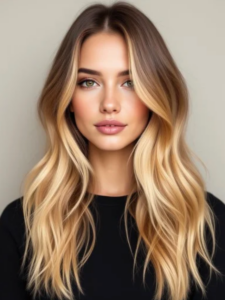
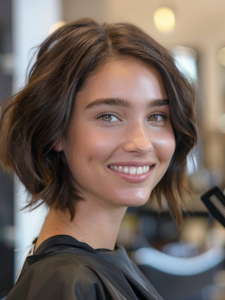
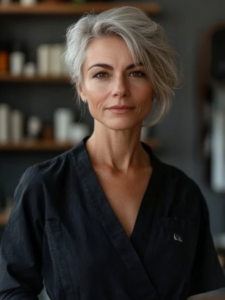
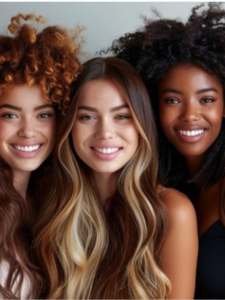
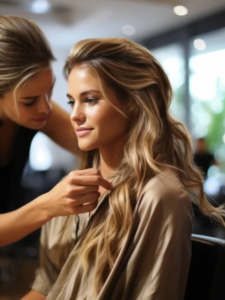
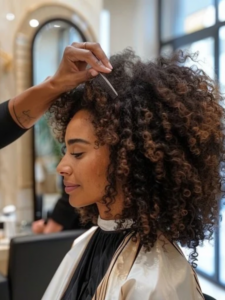
Leave a Reply